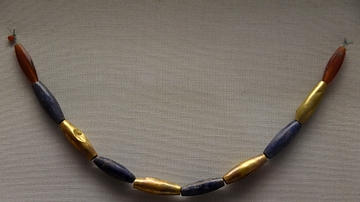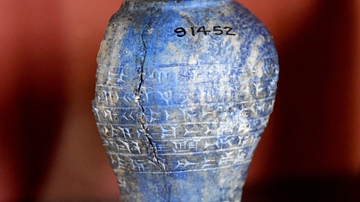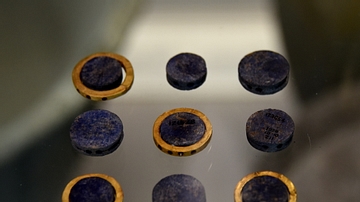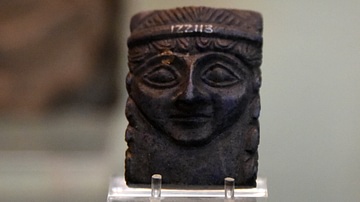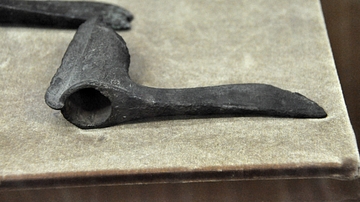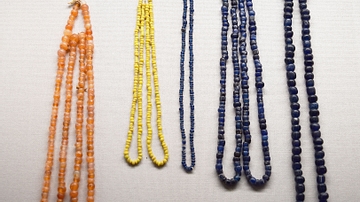Illustration
The jewellery was found by Puabi's right shoulder inside her grave. Puabi was a Semitic Akkadian woman from Ur, c. 2600 BCE, possibly a queen or priestess. Possibly this was part of her headdress. It is composed of three lapis lazuli and one banded agate beads, ending in a pendant in the shape of a recumbent bull. Early Dynastic Period. From the Royal Cemetery at Ur, Southern Mesopotamia, modern-day Iraq. Part of objects allotted to the British Museum from Ur excavation season 1927-1928 CE. (The British Museum, London).
About the Author
Cite This Work
APA Style
Amin, O. S. M. (2018, February 23). Puabi's Lapis Lazuli & Agate Beads with a Calf Pendant, Ur. World History Encyclopedia. Retrieved from https://www.worldhistory.org/image/8106/puabis-lapis-lazuli--agate-beads-with-a-calf-penda/
Chicago Style
Amin, Osama Shukir Muhammed. "Puabi's Lapis Lazuli & Agate Beads with a Calf Pendant, Ur." World History Encyclopedia. Last modified February 23, 2018. https://www.worldhistory.org/image/8106/puabis-lapis-lazuli--agate-beads-with-a-calf-penda/.
MLA Style
Amin, Osama Shukir Muhammed. "Puabi's Lapis Lazuli & Agate Beads with a Calf Pendant, Ur." World History Encyclopedia. World History Encyclopedia, 23 Feb 2018, https://www.worldhistory.org/image/8106/puabis-lapis-lazuli--agate-beads-with-a-calf-penda/. Web. 20 Apr 2025.



